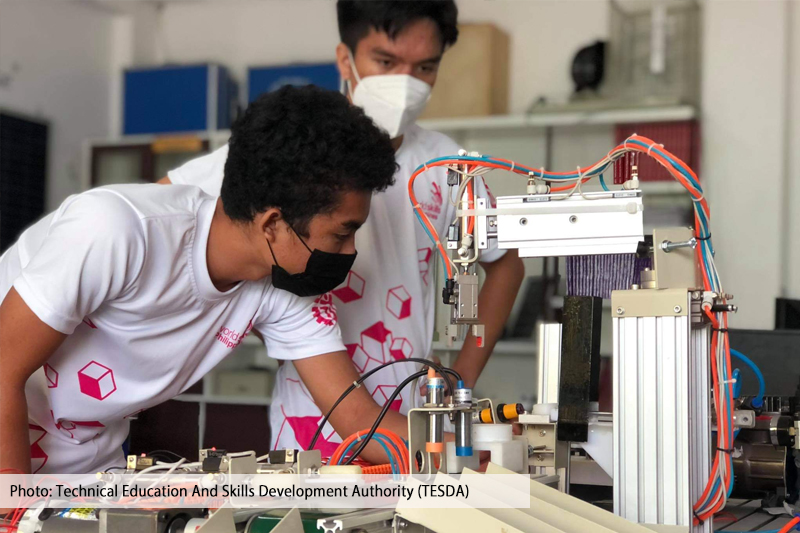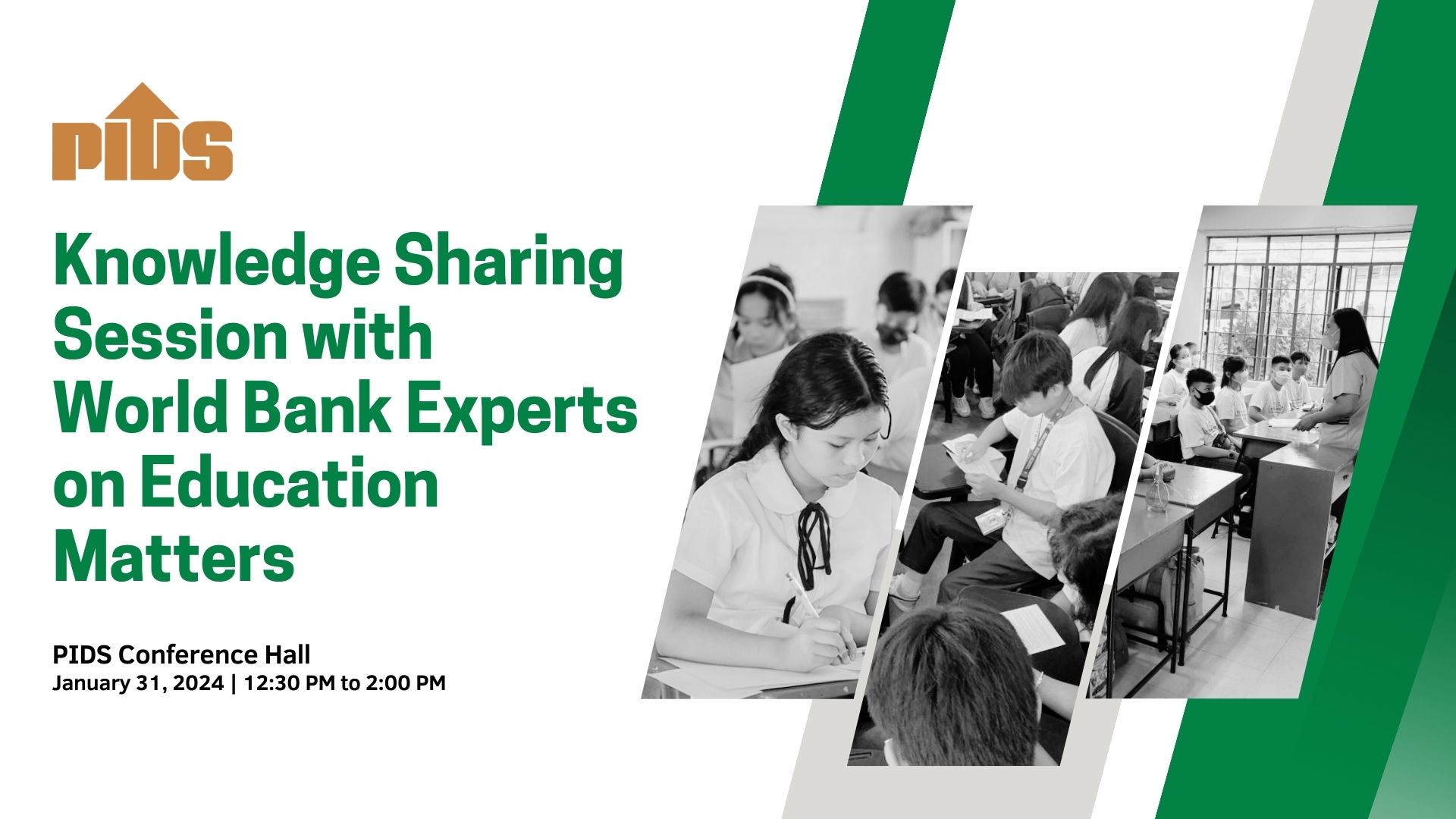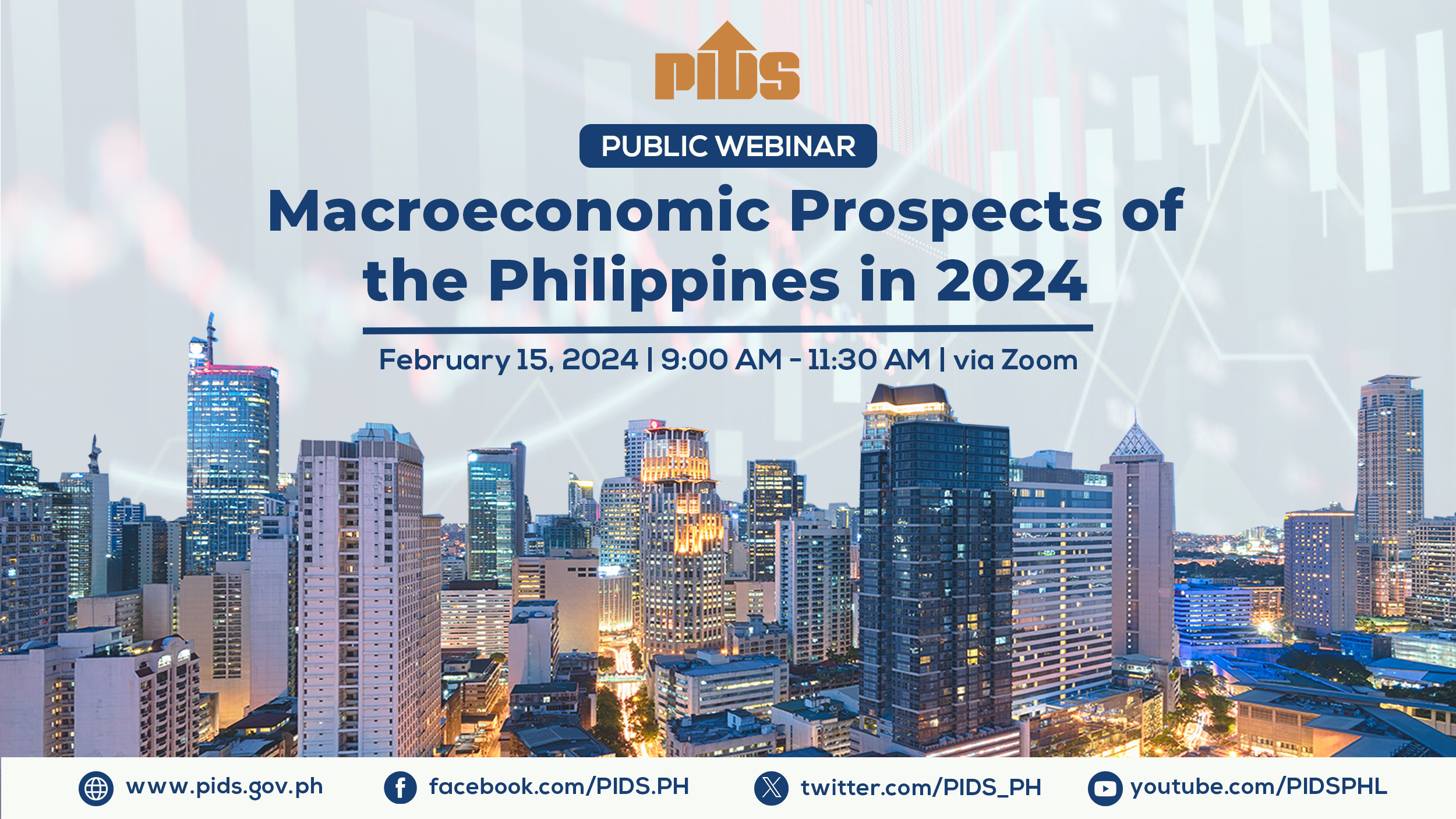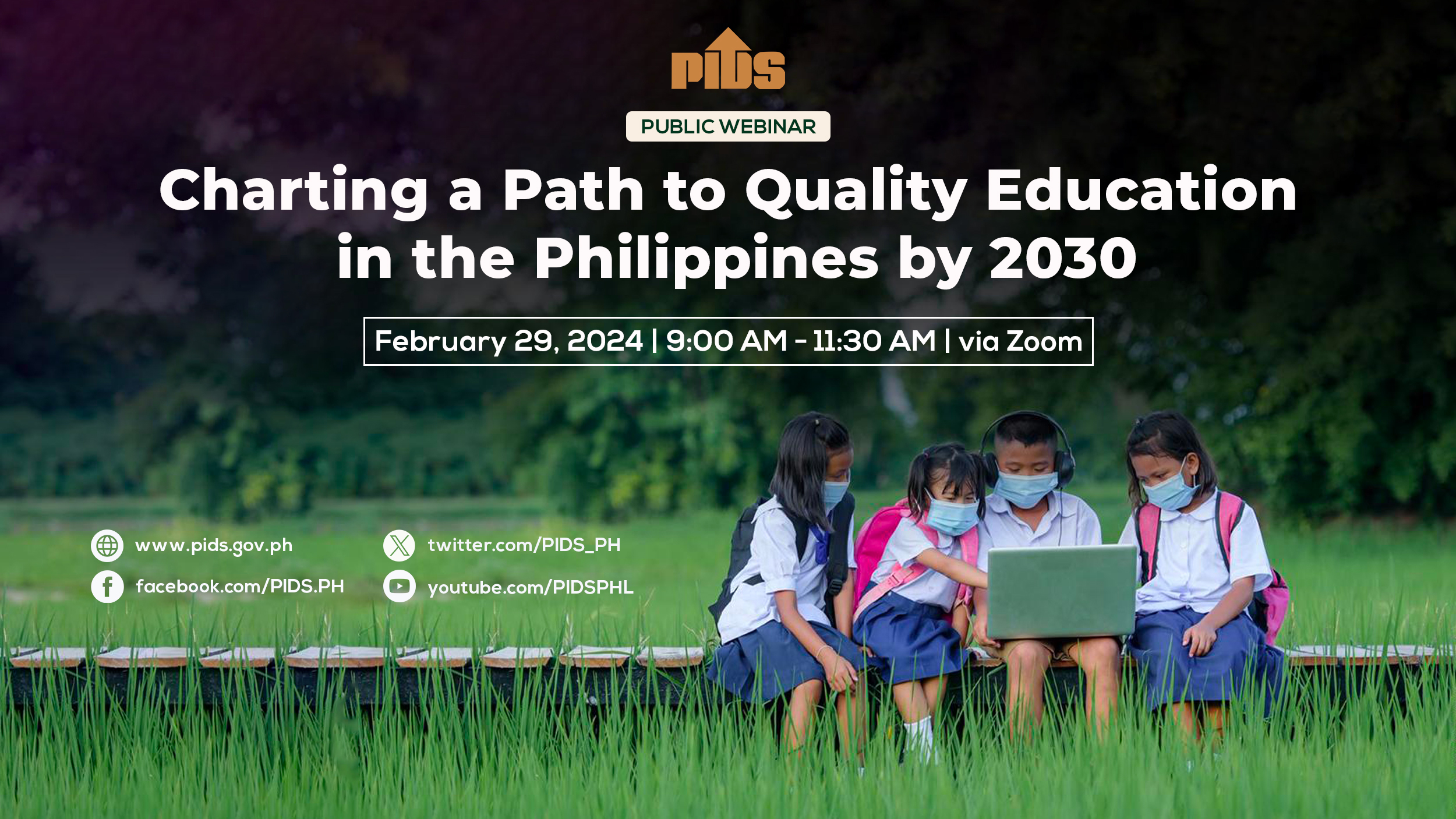“I WANT to be a scientist to learn about chemistry…and find a vaccine like in this pandemic,” a pupil from Metro Manila answered in a focus group discussion.
Meanwhile, another grade schooler from Region XII shared in Filipino, “I want to study science to cure disease and create technology better than what we have now.”
If these views by nine-year-old grade schooler reflect the sentiment of most of the over 26 million K-12 schoolchildren today, then there is hope for the country’s basic science education—and researchers of the study from which these statements were culled believe the prospects ahead are indeed “bright.”
Given the reality of the Covid-19 pandemic, the grade schoolers shared their inclination to pursue a science career in the study’s discussion groups, convinced that “the solution to this health concern will be provided by science.”
Some replied that “other cures are being discovered through science.”
As countries now rely more and more on the contributions of scientists to spur a knowledge- and innovation-driven economy for industrial growth and development, the Philippines grapples with how its K-12 science curriculum is shaping the schoolchildren’ science literacy during their formative years.
The impact of basic science education should lead them to choose the science, technology, engineering and mathematics (STEM) track in higher year levels and later pursue a career related to these fields.
A collaborative effort of the University of the Philippines College of Mass Communication Foundation Inc. (UPCMCFI) and the Department of Science and Technology’s Science Education Institute (DOST-SEI), the study covered the first of a three-phase project titled, “A Three-Year Project on the Perception of STEM Among Filipino Grades 3 to 12 Students in the Philippines [2020 to 2022].”
The comprehensive study seeks to determine the attitudes of K-12 pupils toward STEM subjects under the new science curriculum introduced with the passage of Republic Act 10533, or the Enhanced Basic Education Act of 2013.
The new science program has integrated different disciplines—life science, chemistry, physics and earth science—in every level, placing science and technology (S&T) in “everyday human affairs” and promoting their strong link, including indigenous technology, to preserve cultural heritage.
As it explores the “appreciation and relevance of science” among selected Grades 3 to 6 pupils, the perception study could be the first institutional assessment of the new science program nine years after it was first implemented.
Bright prospects
IN their report titled, “Appreciating Science: A Project on Perception of Science Among Filipino K3 to K6 Students in the Philippines [Year 1],” the researchers found that schoolchildren had “a neutral to positive attitude, awareness and knowledge” of science.
“When you talk of prospects, of course, there are,” UPCMCFI Board Secretary Dr. Lourdes M. Portus said at the online roundtable discussion titled, “Kuwela pa ba ang Siyensya [Is science still cool]?” presented by the DOST-SEI on August 26.
Portus was part of the UPCMCFI research team that presented its findings in the forum, which included its president and UP College of Mass Communication Dean Dr. Arminda V. Santiago and retired UPCMC professor Dr. Aleli A. Quirante.
They conducted the study from January 2020 to February 2021 using online strategies due to quarantine restrictions.
“As the study showed, there is no negative perception on science it is between neutral to positive. When we asked them about their inclination to science, there is a big area where they said they want to become a scientist. They also said that science has helped them not only in their daily lives, but also in the prospects of them becoming scientists,” Portus explained.
In a survey of Grades 3 to 6 pupils, between 8 to 14 years old from public and private schools in 11 regions, including Metro Manila, the researchers found that the schoolchildren expressed neutral to positive sentiments to 61 statements about science.
These statements measured their 1) perception about science, 2) attitude on science, 3) awareness of opportunities in science, 4) knowledge about science, 5) perceived competency of science teachers, 6) parental support in learning science and 7) inclination towards scientific opportunities.”
Key findings
HERE are some key findings in the study of the “awareness, knowledge, attitudes and experiences in studying science subjects” of the grade schoolers which were almost equally distributed between male (532) and female (549) and those from public (549) and private (532) schools.
More than half, or 55.6 percent, of the schoolchildren strongly agreed that science is useful in their everyday lives, while a majority or 67.9 percent recognized that science is important for them to study and learn.
Almost half or 49.1 percent strongly agreed that science is an exciting subject, with 39.1 percent of them answering that they always participated in class discussions.
While many pupils, or 30.2 percent, agreed that they discussed famous scientists and their contributions to the world, there is a need to increase their awareness of the works and accomplishments of these scientists, especially the Filipino scientists.
Asked if their science education can help them land a job someday, almost half, or 48.5 percent, strongly agreed their scientific learnings can help them and only 1.3 percent disagreed.
Probed whether science made them aware of new and exciting jobs in the field, 33.2 percent strongly agreed that science opened their eyes to these jobs, while only 1.6 percent strongly disagreed.
The grade schoolers generally agreed that their teachers are competent based on their perception of, interactions with and how they teach them.
Higher grade pupils perceived their teachers as more competent because of the increased complexity of science concepts, skills and lessons being taught to them as they advance in their education.
More schoolchildren, or 25 percent, said they would pursue careers in the fields of medicine and healthcare, followed by those in the armed forces and military, and science and engineering.
A big majority, or 63 percent, agreed they would be interested in taking a science-related job, while 63.5 percent would focus more on their science education when they grow up.
Shallow understanding
IN the eight discussion groups held in both public and private schools in Metro Manila and three other regions with a total of 56 participants, the researchers found that schoolchildren possessed only a “shallow understanding” of science.
“While most of them recalled terms that were taught inside the classroom, they did not know how to characterize, explain and even relate these with one another. They have difficulty in absorbing science concepts and thinking about them in creative and innovative ways,” the researchers noted.
The researchers found that the grade schoolers preferred a more learner-centered approach to teaching science, in which they are encouraged to ask questions and to seek answers for themselves.
They also underscored the need for a more interactive approach to teaching STEM, facilitated by competent and knowledgeable teachers, parental support and real-world examples.
“Both survey and [discussion group] results confirm that motivation and inclination of the [schoolchildren] to pursue science is not limited to the classroom,” the researchers said.
“What they really need is exposure,” Portus explained, pointing to experiments, field trips and knowing more Filipino scientists, among others, to “inspire the students.”
Making science ‘cool’
ALMOST one out of four pupils, or 24.4 percent, find science difficult to understand and this is aggravated by their poor command of the English language.
The study said that “[grade schoolers] need time to learn the language while learning science concepts.”
“There are cases when the environment is so difficult for them to really achieve this critical, scientific thinking, [such as] no parental support or the teachers do not have a good command of English or science specialization,” Portus said.
“But even if the children are not good or excellent as long as the teacher is very good, he can encourage them to really love science,” she explained.
Besides parents, Quirante also pointed out the importance of local government support to science education, citing a province where its officials consult the teachers in drafting ordinances or whatever is needed to improve education.
“It also gives financial support to [schoolchildren joining] contests, provides facilities and holds activities like science fairs—because the DepEd [Department of Education] cannot provide everything—and that will really give opportunities to [children] to pursue the STEM track,” Quirante said.
“It is the entire environment or the whole gamut of the context in which the child will really appreciate science,” Portus added.
Science culture
DURING the same forum, Science Secretary Fortunato T. de la Peña said, “DOST is always trying to find avenues for this kind of collaborative research that will help us make science work for the people.”
“We are particularly concerned about recent reports that Filipinos are not doing well in STEM, aggravated by the pandemic. We hope that this helps strengthen our approach in building a science culture where learning is prioritized and interest in science is maintained,” de la Peña added.
Meanwhile, DOST Undersecretary for Scientific and Technical Services Dr. Renato U. Solidum Jr. said “it is very important to intensify our S&T promotions and invite the young generation to take on the STEM track.”
Solidum mentioned a study of the Philippine Institute for Development Studies which said that “S&T professions will remain to be in-demand, particularly in the fields of engineering and information technology.”
He added: “Our S&T workforce constitutes only 5 percent of our total workforce, [which is] too small given the fast-paced developments in global industries.”
For her part, DOST-SEI Director Dr. Josette T. Biyo said that “to help [the next generation] appreciate science as a way of thinking, we need first to understand how they think and feel in the first place—about us and about the world that they will someday inherit.”
“By seeing the world through the eyes of our young [schoolchildren], we are better able to help them achieve their aspirations and see the world anew once more as we did in our own childhood—as a place of wonder, hope and infinite possibility,” Biyo said.
Meanwhile, another grade schooler from Region XII shared in Filipino, “I want to study science to cure disease and create technology better than what we have now.”
If these views by nine-year-old grade schooler reflect the sentiment of most of the over 26 million K-12 schoolchildren today, then there is hope for the country’s basic science education—and researchers of the study from which these statements were culled believe the prospects ahead are indeed “bright.”
Given the reality of the Covid-19 pandemic, the grade schoolers shared their inclination to pursue a science career in the study’s discussion groups, convinced that “the solution to this health concern will be provided by science.”
Some replied that “other cures are being discovered through science.”
As countries now rely more and more on the contributions of scientists to spur a knowledge- and innovation-driven economy for industrial growth and development, the Philippines grapples with how its K-12 science curriculum is shaping the schoolchildren’ science literacy during their formative years.
The impact of basic science education should lead them to choose the science, technology, engineering and mathematics (STEM) track in higher year levels and later pursue a career related to these fields.
A collaborative effort of the University of the Philippines College of Mass Communication Foundation Inc. (UPCMCFI) and the Department of Science and Technology’s Science Education Institute (DOST-SEI), the study covered the first of a three-phase project titled, “A Three-Year Project on the Perception of STEM Among Filipino Grades 3 to 12 Students in the Philippines [2020 to 2022].”
The comprehensive study seeks to determine the attitudes of K-12 pupils toward STEM subjects under the new science curriculum introduced with the passage of Republic Act 10533, or the Enhanced Basic Education Act of 2013.
The new science program has integrated different disciplines—life science, chemistry, physics and earth science—in every level, placing science and technology (S&T) in “everyday human affairs” and promoting their strong link, including indigenous technology, to preserve cultural heritage.
As it explores the “appreciation and relevance of science” among selected Grades 3 to 6 pupils, the perception study could be the first institutional assessment of the new science program nine years after it was first implemented.
Bright prospects
IN their report titled, “Appreciating Science: A Project on Perception of Science Among Filipino K3 to K6 Students in the Philippines [Year 1],” the researchers found that schoolchildren had “a neutral to positive attitude, awareness and knowledge” of science.
“When you talk of prospects, of course, there are,” UPCMCFI Board Secretary Dr. Lourdes M. Portus said at the online roundtable discussion titled, “Kuwela pa ba ang Siyensya [Is science still cool]?” presented by the DOST-SEI on August 26.
Portus was part of the UPCMCFI research team that presented its findings in the forum, which included its president and UP College of Mass Communication Dean Dr. Arminda V. Santiago and retired UPCMC professor Dr. Aleli A. Quirante.
They conducted the study from January 2020 to February 2021 using online strategies due to quarantine restrictions.
“As the study showed, there is no negative perception on science it is between neutral to positive. When we asked them about their inclination to science, there is a big area where they said they want to become a scientist. They also said that science has helped them not only in their daily lives, but also in the prospects of them becoming scientists,” Portus explained.
In a survey of Grades 3 to 6 pupils, between 8 to 14 years old from public and private schools in 11 regions, including Metro Manila, the researchers found that the schoolchildren expressed neutral to positive sentiments to 61 statements about science.
These statements measured their 1) perception about science, 2) attitude on science, 3) awareness of opportunities in science, 4) knowledge about science, 5) perceived competency of science teachers, 6) parental support in learning science and 7) inclination towards scientific opportunities.”
Key findings
HERE are some key findings in the study of the “awareness, knowledge, attitudes and experiences in studying science subjects” of the grade schoolers which were almost equally distributed between male (532) and female (549) and those from public (549) and private (532) schools.
More than half, or 55.6 percent, of the schoolchildren strongly agreed that science is useful in their everyday lives, while a majority or 67.9 percent recognized that science is important for them to study and learn.
Almost half or 49.1 percent strongly agreed that science is an exciting subject, with 39.1 percent of them answering that they always participated in class discussions.
While many pupils, or 30.2 percent, agreed that they discussed famous scientists and their contributions to the world, there is a need to increase their awareness of the works and accomplishments of these scientists, especially the Filipino scientists.
Asked if their science education can help them land a job someday, almost half, or 48.5 percent, strongly agreed their scientific learnings can help them and only 1.3 percent disagreed.
Probed whether science made them aware of new and exciting jobs in the field, 33.2 percent strongly agreed that science opened their eyes to these jobs, while only 1.6 percent strongly disagreed.
The grade schoolers generally agreed that their teachers are competent based on their perception of, interactions with and how they teach them.
Higher grade pupils perceived their teachers as more competent because of the increased complexity of science concepts, skills and lessons being taught to them as they advance in their education.
More schoolchildren, or 25 percent, said they would pursue careers in the fields of medicine and healthcare, followed by those in the armed forces and military, and science and engineering.
A big majority, or 63 percent, agreed they would be interested in taking a science-related job, while 63.5 percent would focus more on their science education when they grow up.
Shallow understanding
IN the eight discussion groups held in both public and private schools in Metro Manila and three other regions with a total of 56 participants, the researchers found that schoolchildren possessed only a “shallow understanding” of science.
“While most of them recalled terms that were taught inside the classroom, they did not know how to characterize, explain and even relate these with one another. They have difficulty in absorbing science concepts and thinking about them in creative and innovative ways,” the researchers noted.
The researchers found that the grade schoolers preferred a more learner-centered approach to teaching science, in which they are encouraged to ask questions and to seek answers for themselves.
They also underscored the need for a more interactive approach to teaching STEM, facilitated by competent and knowledgeable teachers, parental support and real-world examples.
“Both survey and [discussion group] results confirm that motivation and inclination of the [schoolchildren] to pursue science is not limited to the classroom,” the researchers said.
“What they really need is exposure,” Portus explained, pointing to experiments, field trips and knowing more Filipino scientists, among others, to “inspire the students.”
Making science ‘cool’
ALMOST one out of four pupils, or 24.4 percent, find science difficult to understand and this is aggravated by their poor command of the English language.
The study said that “[grade schoolers] need time to learn the language while learning science concepts.”
“There are cases when the environment is so difficult for them to really achieve this critical, scientific thinking, [such as] no parental support or the teachers do not have a good command of English or science specialization,” Portus said.
“But even if the children are not good or excellent as long as the teacher is very good, he can encourage them to really love science,” she explained.
Besides parents, Quirante also pointed out the importance of local government support to science education, citing a province where its officials consult the teachers in drafting ordinances or whatever is needed to improve education.
“It also gives financial support to [schoolchildren joining] contests, provides facilities and holds activities like science fairs—because the DepEd [Department of Education] cannot provide everything—and that will really give opportunities to [children] to pursue the STEM track,” Quirante said.
“It is the entire environment or the whole gamut of the context in which the child will really appreciate science,” Portus added.
Science culture
DURING the same forum, Science Secretary Fortunato T. de la Peña said, “DOST is always trying to find avenues for this kind of collaborative research that will help us make science work for the people.”
“We are particularly concerned about recent reports that Filipinos are not doing well in STEM, aggravated by the pandemic. We hope that this helps strengthen our approach in building a science culture where learning is prioritized and interest in science is maintained,” de la Peña added.
Meanwhile, DOST Undersecretary for Scientific and Technical Services Dr. Renato U. Solidum Jr. said “it is very important to intensify our S&T promotions and invite the young generation to take on the STEM track.”
Solidum mentioned a study of the Philippine Institute for Development Studies which said that “S&T professions will remain to be in-demand, particularly in the fields of engineering and information technology.”
He added: “Our S&T workforce constitutes only 5 percent of our total workforce, [which is] too small given the fast-paced developments in global industries.”
For her part, DOST-SEI Director Dr. Josette T. Biyo said that “to help [the next generation] appreciate science as a way of thinking, we need first to understand how they think and feel in the first place—about us and about the world that they will someday inherit.”
“By seeing the world through the eyes of our young [schoolchildren], we are better able to help them achieve their aspirations and see the world anew once more as we did in our own childhood—as a place of wonder, hope and infinite possibility,” Biyo said.












